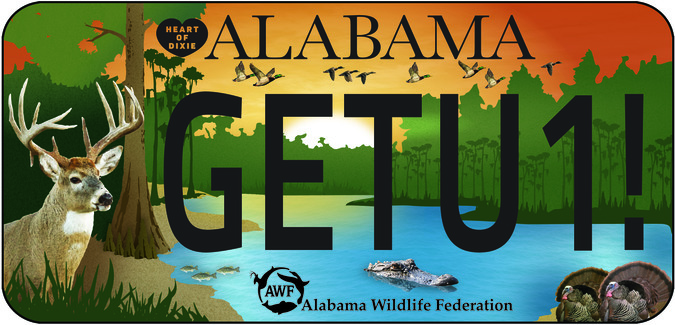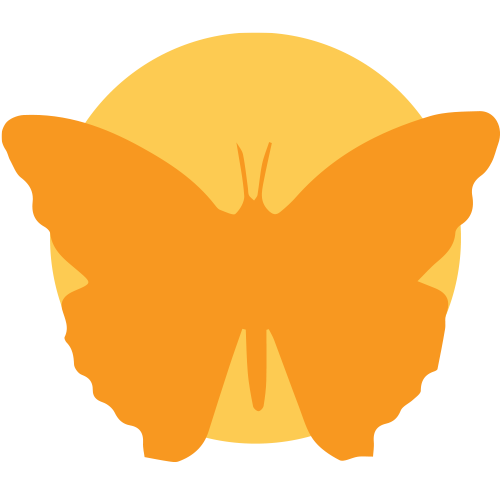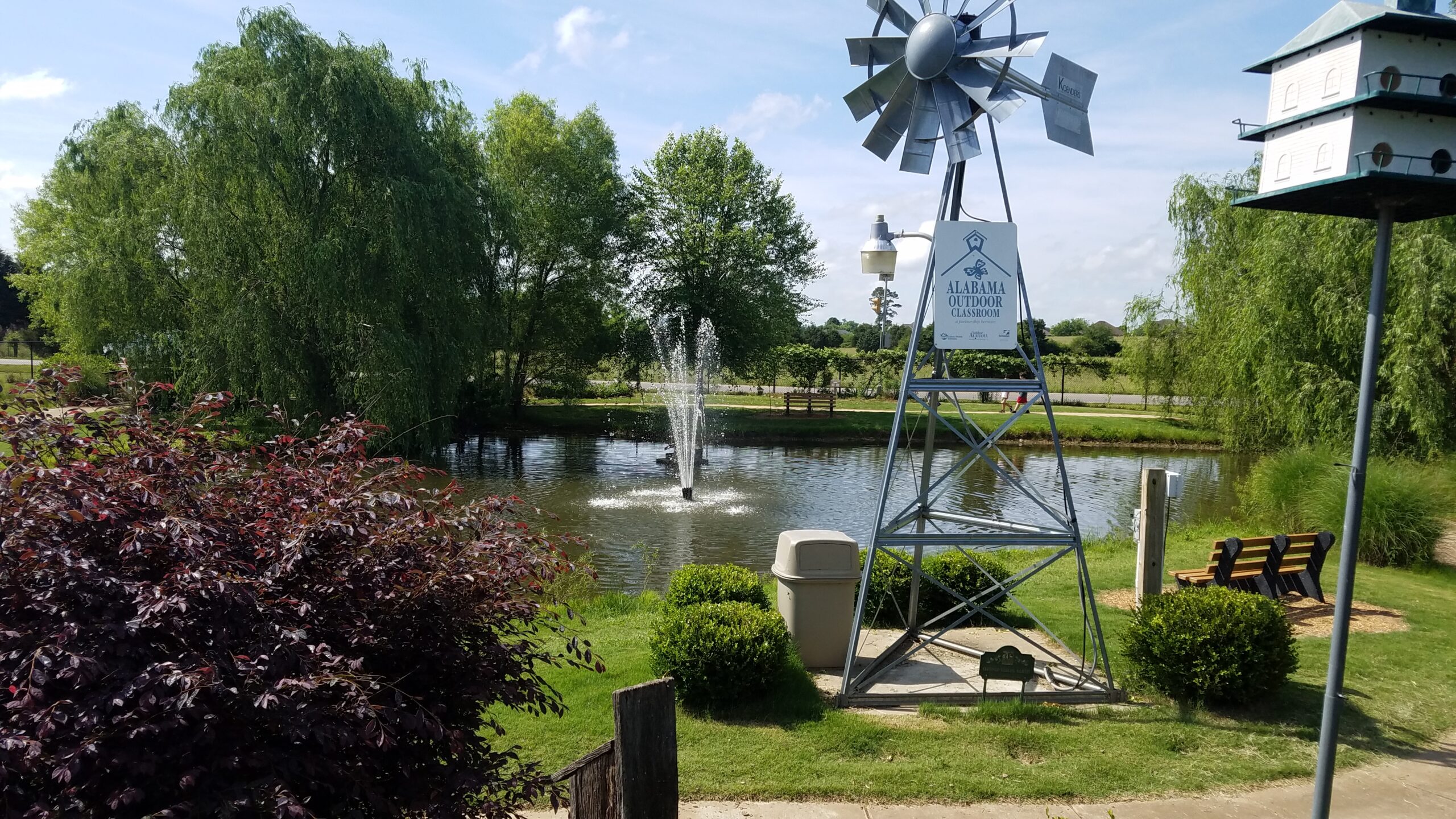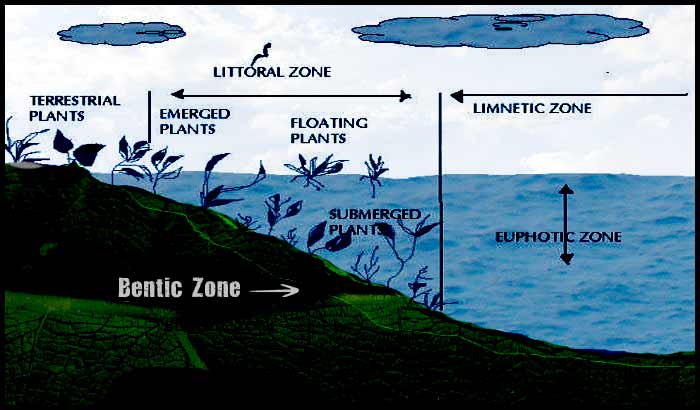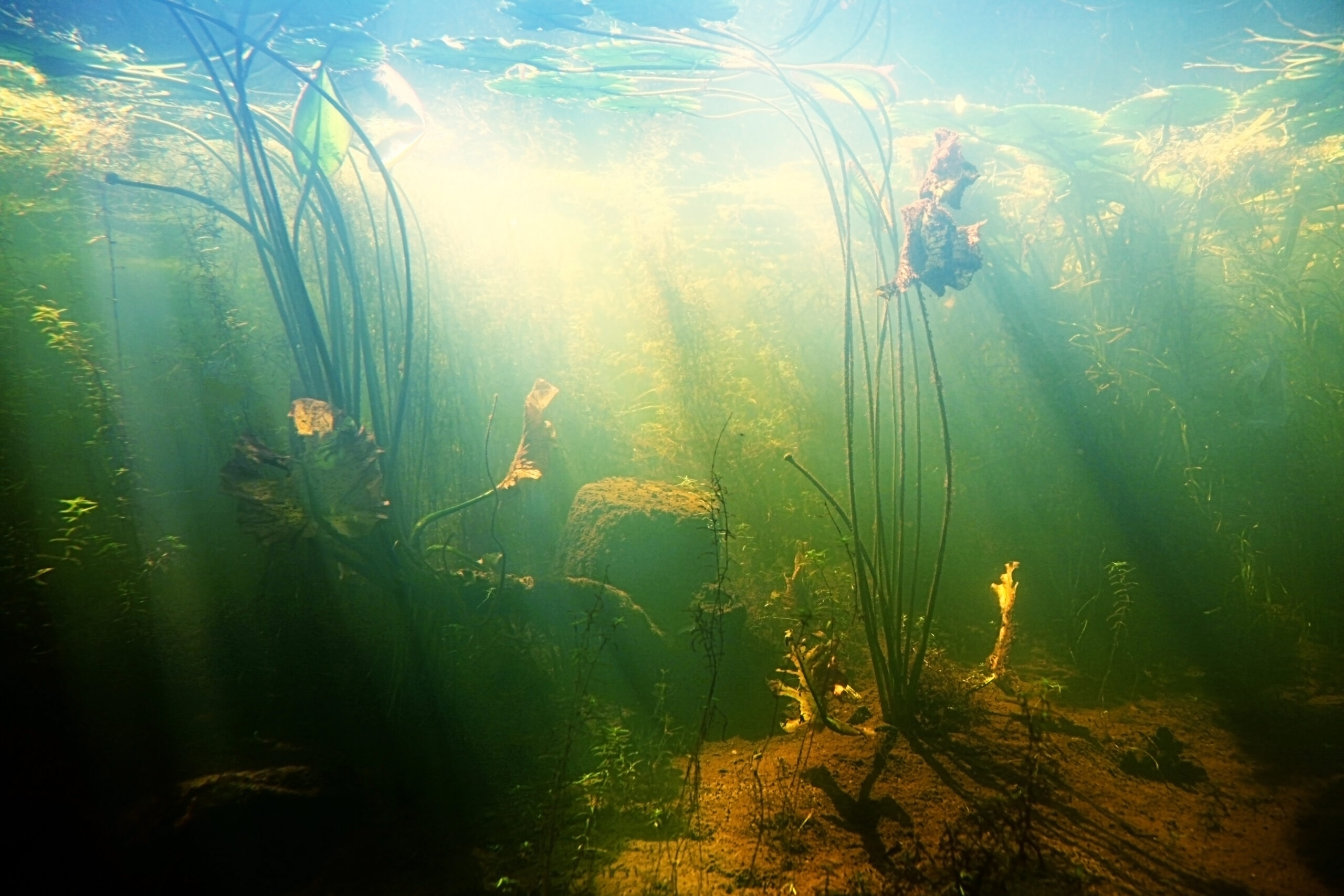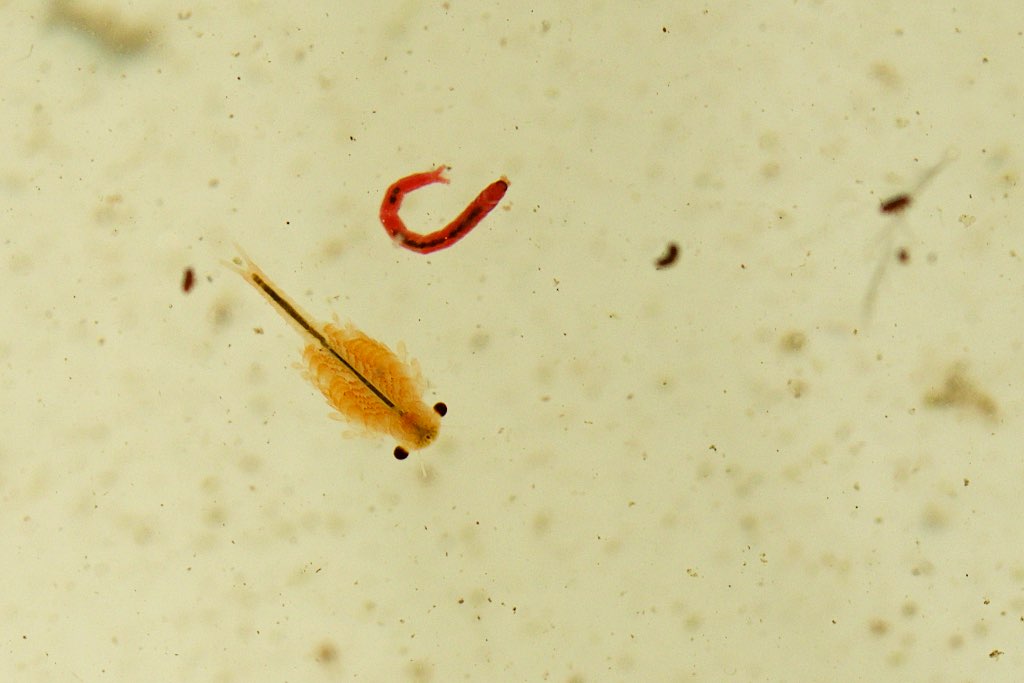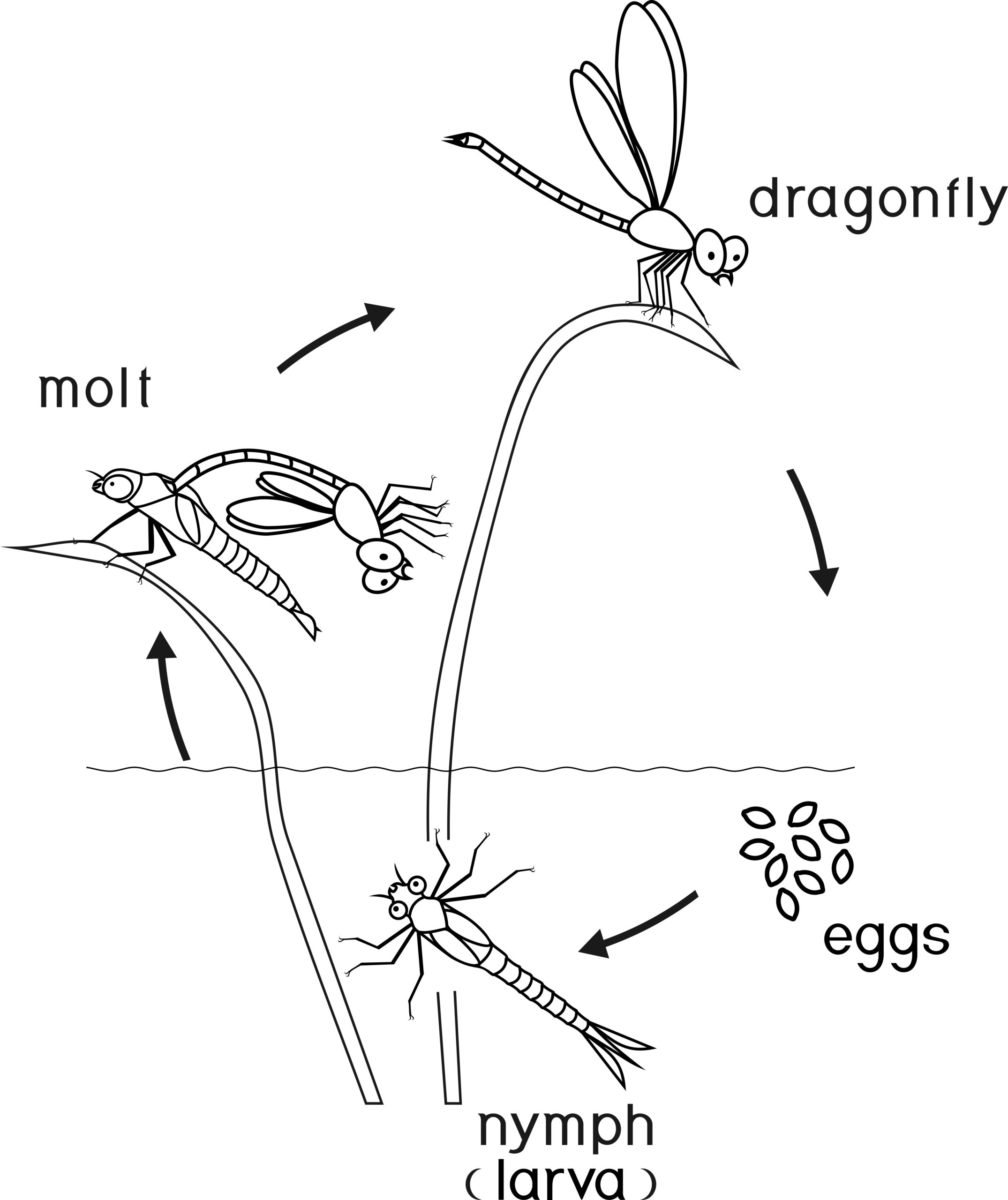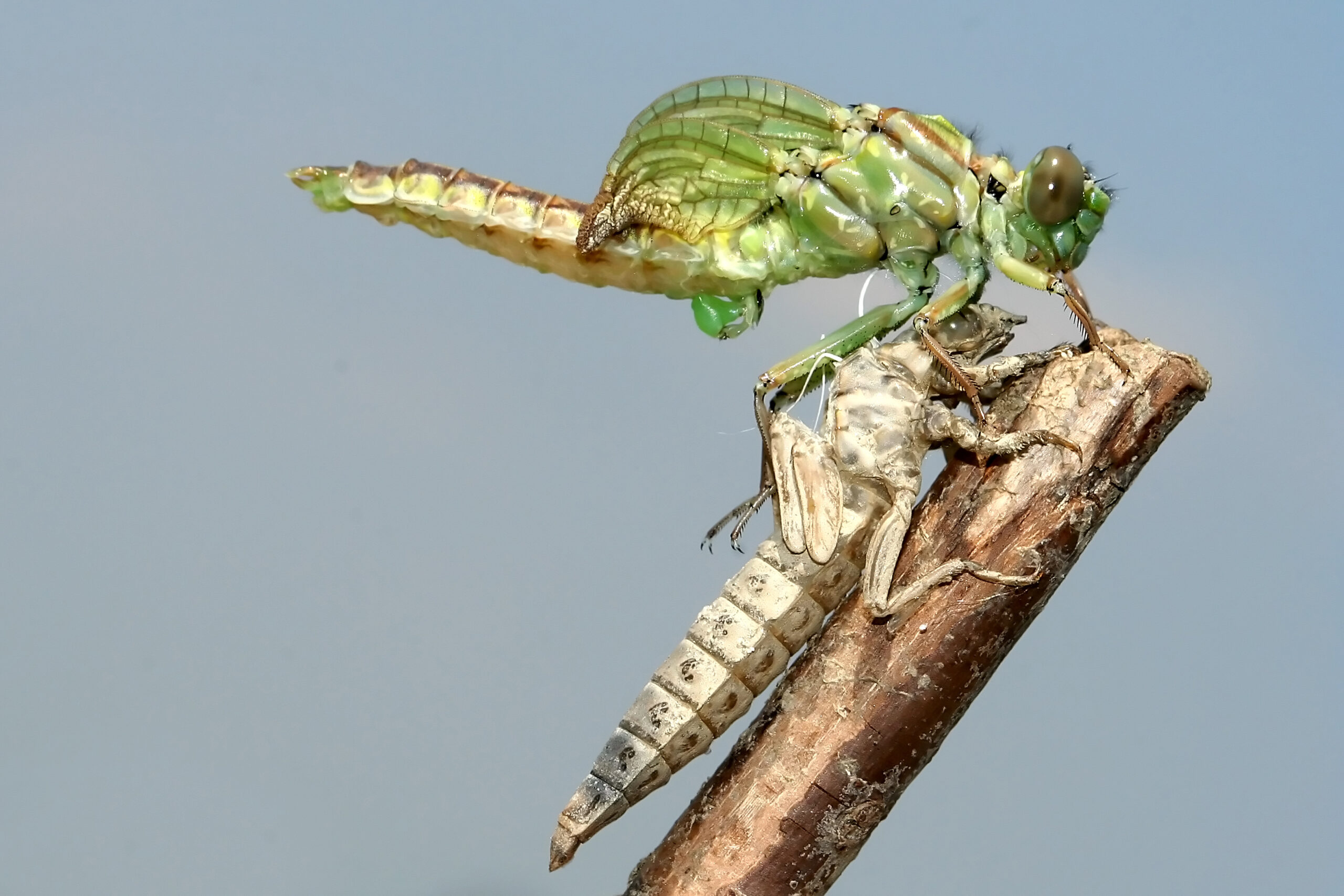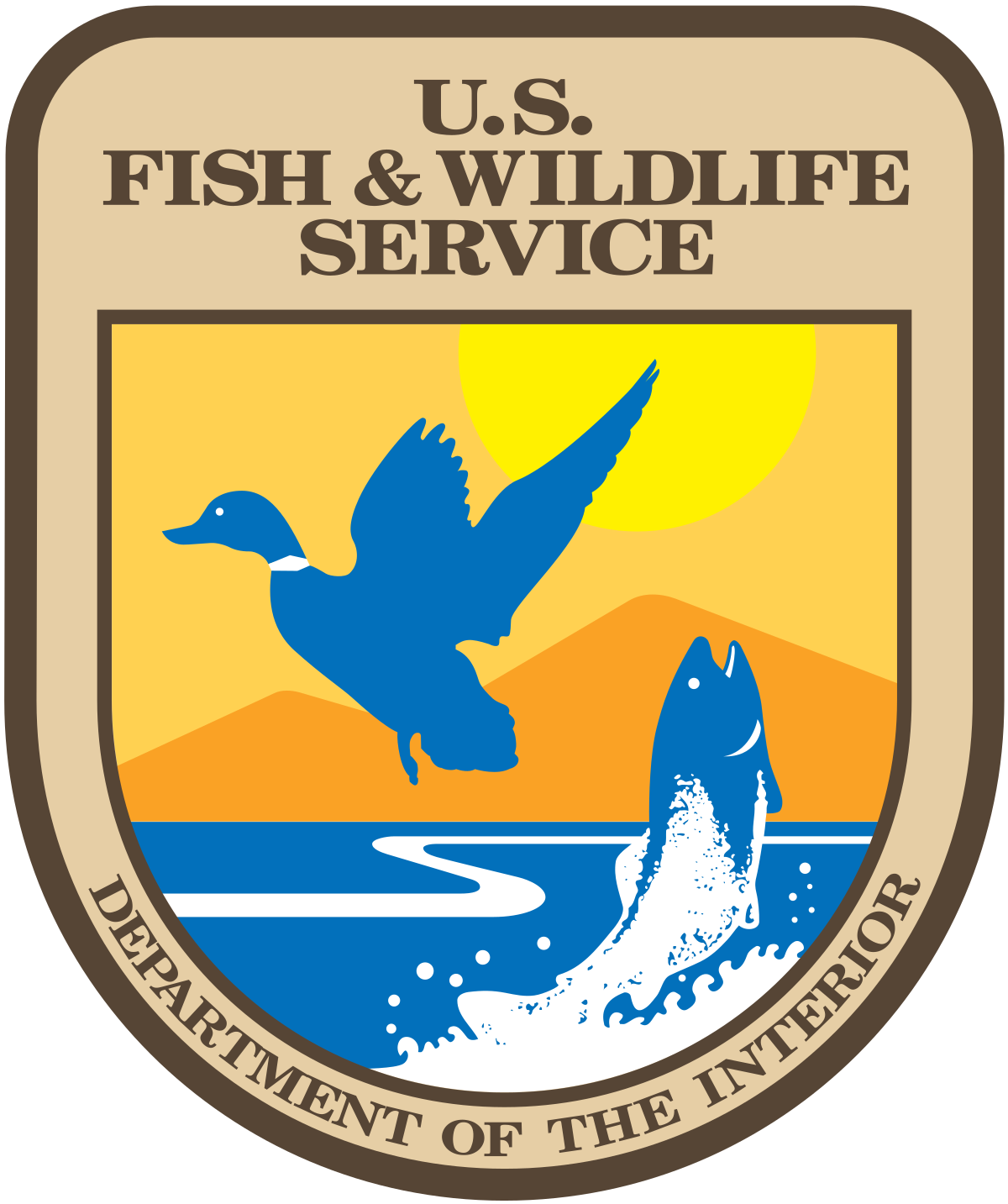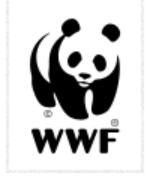*Click Here for Upper Grades (6-12) Version*
| Legacy Elementary Pond Click image to enlarge it |
 Investigate Ponds
Investigate Ponds
| Click on the topics below to learn more! | ||
| What is a Pond? | Pond Habitats | Dragonflies |
| What is a Pond? | |
| A pond is a small body of water that is shallow enough for sunlight to reach the bottom, allowing rooted plants to grow at its deepest point.
There are two types of ponds – permanent and temporary. Permanent ponds exist year-round. Temporary ponds develop seasonally when rain or melting snow fill in shallow depressions in the ground. They typically dry up in the summer. |
|
|
Permanent Pond |
Temporary Pond
CO Canal NHP – Wikimedia Click image to enlarge it |
| Pond Habitats | |
| Ponds are home to many types of plants and animals.
Life forms range from microscopic (too small to see with the naked eye) bacteria to insects, fish, small animals, and birds. Several distinctive zones or microhabitats (smaller habitats within a larger habitat) can be found within the pond. Depending on its size, a pond may have one, multiple, or all of these zones. |
Pond Zones |
| Open-water Habitat (Limnetic Zone) | |
| The open-water area mainly consists of water surrounded by plant life. It ends where plants are dense and rooted into the soil. | |
| The open water habitat is home to large, free-swimming organism such as fish, and small microscopic plants and animals called plankton that drift in the water.
Other animals such as turtles, birds, and larger fish comes to the open-water area for food. Some insects, insect larvae, and crustaceans migrate from the bottom towards the surface, but return to the bottom as daylight appears. |
Underwater in a Open-water |
|
Bottom Habitat (Benthic Zone)
Life in the bottom habitat of a pond depends upon the type of bottom a pond may have. For example, if the pond is shallow and has a sandy bottom it could be home to sponges, earthworms, snails and insects. Ponds with bottoms of mud or silt may be home to crayfish, and the nymphs (larva) of mayflies, dragonflies, and microorganisms. |
Crayfish at Bottom of Pond |
|
If light does not make its way to the bottom of a pond, the water may be cloudy and thick, making it impossible for plants to grow there.
No plants means no homes for animals. Only small invertebrates (animals with no spine), like earthworms, small clams, fairy shrimp, and bloodworms (fly larva) can survive here.
|
Bloodworm & Fairy Shrimp |
|
Shore Habitat (Littoral Zone)
The shore habitat extends from the waters edge outward as far as rooted plants grow. This area has the highest number of species of all the zones. Typically, there are three distinct borders of flowering plants that makes up the shore habitat: the emergent plant zone; floating plant zone; and submersed plant zone. If the shore is rocky, plants may not grow in this area. |
|
|
The emergent plant zone:
The floating plant zone:
|
Different Plants in Shore Habitat |
|
The submersed plant zone:
|
|
|
Surface Film Habitat
The surface film habitat is located on the top (surface) of the pond water.
It is the habitat for air-breathing floating animals (insects) such as water striders and other animals that can walk on the surface of water without breaking through. Some insects and free-floating animals are adapted to live only on the upper side of the surface film. Other animals spend much of their life on the underside of the film beneath the floating plants. |
Water Strider on Water |
| Dragonflies and Their Life Cycle | ||
| Much like frogs, dragonflies depend on wetlands, such as ponds, for a large portion of their lives and undergo metamorphosis (a physical change) over time.
Because of this, their presence or absence is a great indicator of the quality of the pond. If the pond is polluted, they cannot survive there. |
||
|
Dragonfly Life Cycle
Luayana – Dreamstime Click on image to enlarge it |
||
| Step 1: | They begin life as eggs in water. | |
| Step 2:
|
They hatch from the eggs and spend time as an aquatic nymph.
The nymphs stay in water, molting (shedding old skin) as they grow, until they emerge for their final molt on land. They crawl out of the water and cling in an upright position to a plant stem, rock face, tree trunk, or other hard surface. |
|
| Step 3:
|
The skin along their back splits open and they body comes out.
The wings unfold as they fill with blood. The wings dry for about an hour before they are ready for flight. |
Freshly Emerged Dragonfly and Exuviae
Geza Farkas – Dreamstime Click on image to enlarge it |
| The empty shell from which the dragonfly emerged – called exuviae – is left behind, perched until wind, rain, or a person removes it.
There is no more molting at this point, as the adult is at its full size when it emerges. |
||
|
|
||
 |
|
|
|
|
||
|
|
 |
|
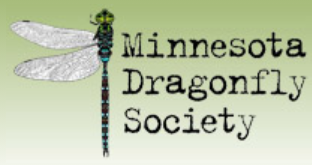 |
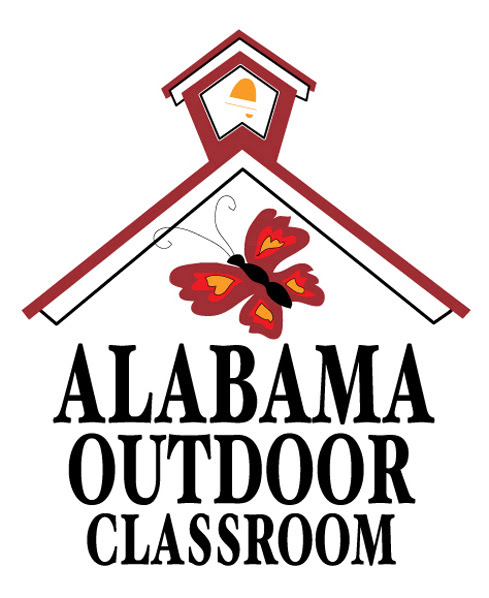 |

